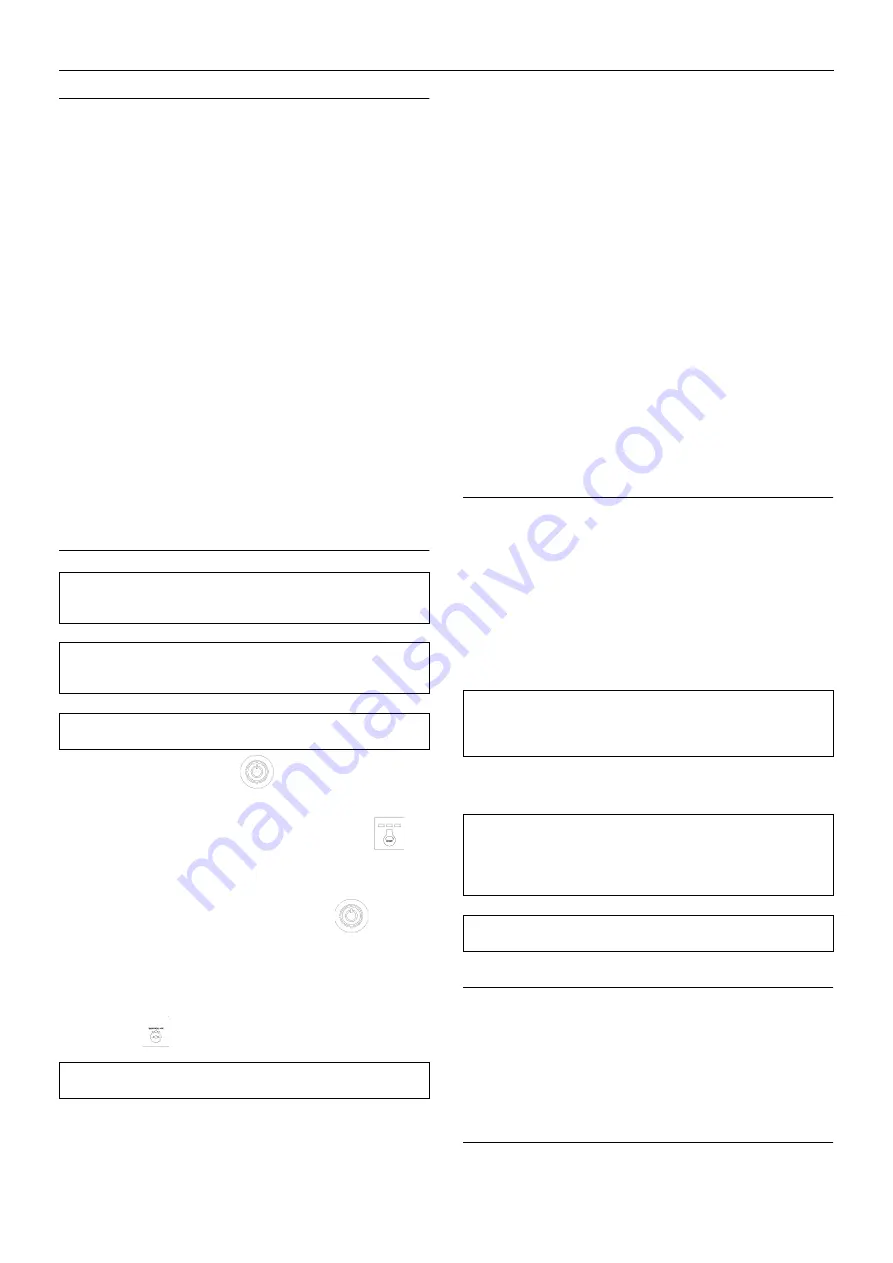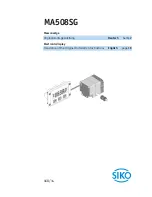
52
OPERATING INSTRUCTIONS
12/154
AIR HOSE RESTRAINT INSTALLATION
Safety devices such as hose restraints (whipchecks) must be used
to prevent hose whipping if a connection fails. Whipchecks are to be
constructed of woven stainless steel, galvanized steel wire rope or
chain with a minimum strength adequate for the supplied pressure and
hose diameter. Whipchecks must be fastened to suitable mounting
points or shackles.
The mounts and/or shackles are to be of the same or greater
strength as the whipchecks. An engineer should be consulted about
suitability of whipchecks, mounts, mounting points, shackles and
fittings as well as strength rating of materials. Whipchecks must be
used at the hose origination, termination and each hose to hose
connection.
Hoses can fail in areas other than at connecting points and require
daily inspection of the hoses for:
•
Cuts, cracks or kinks
•
Weakened clamps due to rust and corrosion
•
Damaged connections
•
Deformity
•
Incorrect or incompatible components or fittings
•
Any visual damage
Hoses must be selected that are rated for the application as to the
maximum pressure and temperature to be encountered as well as
compatible with the materials being conveyed inside the hose. Hoses
must be compatible with the compressor oil.
STARTING THE MACHINE
1. Press the Main Power Button
.
2. When the Wait To Start message on the MidPort changes to Total
Engine Hours =, press and release Green Start Button
.
3. Engine will crank until engine starts or engine starting time limit is
reached. The first Green light on the Start Button will illuminate.
4. If engine fails to start, press Main Power Button
to remove
power from engine. Repeat steps 1-3.
5. When engine starts, the first two lights on the Start Button will
illuminate.
6. Wait for Engine Temperature to reach 104°F (40°C). Press Service
Air Button.
The third light on the Start Button will illuminate.
Normal Operation
The Operator may observe and monitor operating parameters using
the MidPort and gauge(s). In the event the compressor controller
detects a parameter outside normal operating limits, the compressor
will alert and/or shutdown, and display a diagnostic code.
In the event the compressor controller detects a parameter at a
dangerously high or low level, the compressor will automatically be
stopped with the cause of the shutdown shown on the MidPort.
Delivered air volume at load point pressure is accomplished by two
methods, which work together:
1. The compressor is loaded (inlet valve fully open or modulated
partially open) or unloaded (inlet valve fully closed).
2. Engine speed varies between idle speed and full load speed while
compressor is loaded to match the required volume flow.
Operation - Loaded
Assume engine has been started and is running in the unload state
at idle speed. If there is air demand (pressure falls below the load point
pressure), compressor will load at idle speed by opening the inlet
valve. As air demand rises and falls, engine speed is controlled
between idle speed and full load speed to match the required flow while
maintaining load point pressure.
Operation - Unloaded
If there is no air demand at idle speed (pressure rises above the
unload point pressure), the compressor will unload by closing the inlet
valve. The compressor then runs at idle speed unloaded with no air
delivery. If air demand increases (pressure falls below the load point
pressure), the compressor reloads to meet the required air demand.
STOPPING THE MACHINE
1. Close the service valve(s).
2. Allow the compressor to run at idle speed for 3 to 5 minutes to
allow cool-down.
3. Turn the main control switch to the run position (second position).
This will stop the engine. The MidPort will remain active. Operating
parameters and any active diagnostic codes may be viewed, if
desired.
4. Turn the main control switch to the off position (first position). This
turns off the MidPort and compressor control system.
If the automatic blowdown valve fails to operate, then pressure
must be relieved from the system by means of the service valve(s).
EMERGENCY STOPPING
In the event that the unit has to be stopped in an emergency,
PRESS THE EMERGENCY STOP SWITCH ON THE FRONT OF THE
MACHINE AND ENSURE THAT IT ENGAGES IN DEPRESSED
POSITION.
If the unit is not fitted with an emergency stop switch, rotate the start
switch to the (0) off position.
RE-STARTING AFTER AN EMERGENCY
Disengage emergency stop control from engaged (depressed)
position.
CAUTION:
Do not use ether or any other starting fluid. Starting fluids
can cause an explosion, fire, and severe engine damage. The engine
is equipped with an electric heater starting aid.
NOTICE:
This compressor is equipped with a battery disconnect
switch which disconnects power for long term storage. The switch is
located on the fuel tank side.
NOTICE:
This switch must be in the ON position to provide power to
the Control Panel for starting the compressor.
CAUTION:
To ensure an adequate flow of oil to the airend, never
allow the discharge pressure to fall below 3,4 bar.
NOTE:
As soon as the engine stops, the automatic blowdown valve
will relieve all pressure from the system, except for the discharge pipe
/ manifold area. This area should be depressurised by opening the
discharge valve, keeping clear of any airflow from it.
WARNING: When relieving system pressure by means of the
service valve(s), a small amount of pressure will remain in the
system. No maintenance work should be carried out whilst this
situation exists. This pressure may be relieved by slowly oper-
ating the manual blowdown valve.
CAUTION:
Never allow the machine to stand idle with pressure in the
system.
Summary of Contents for 12/154
Page 2: ......
Page 4: ......
Page 84: ...80 MACHINE SYSTEMS 12 154 page ...
Page 86: ...82 MACHINE SYSTEMS 12 154 ...
Page 88: ...84 MACHINE SYSTEMS 12 154 ...
Page 90: ...86 MACHINE SYSTEMS 12 154 ...
Page 92: ...88 MACHINE SYSTEMS 12 154 ...
Page 94: ...90 MACHINE SYSTEMS 12 154 ...
Page 108: ......
















































